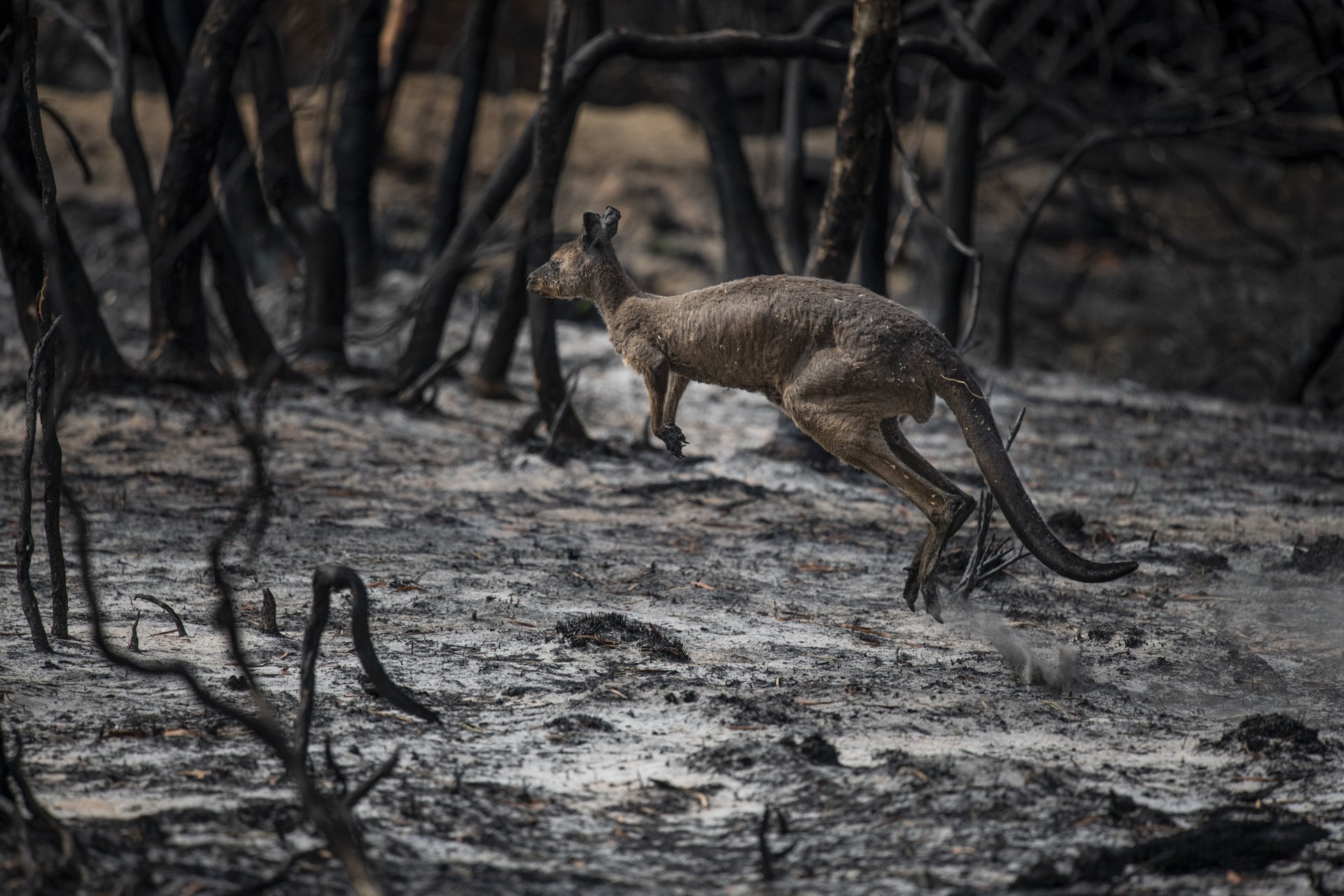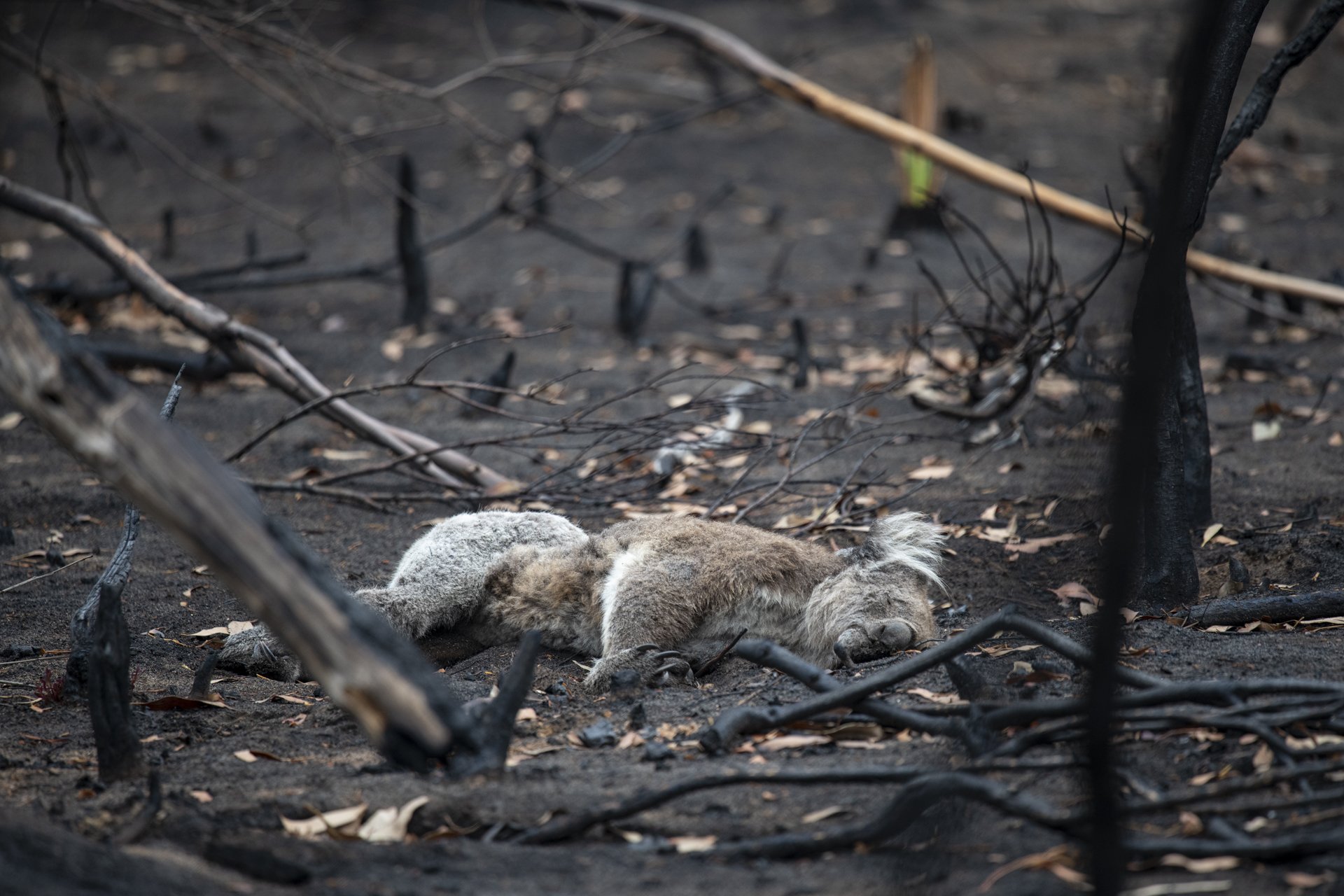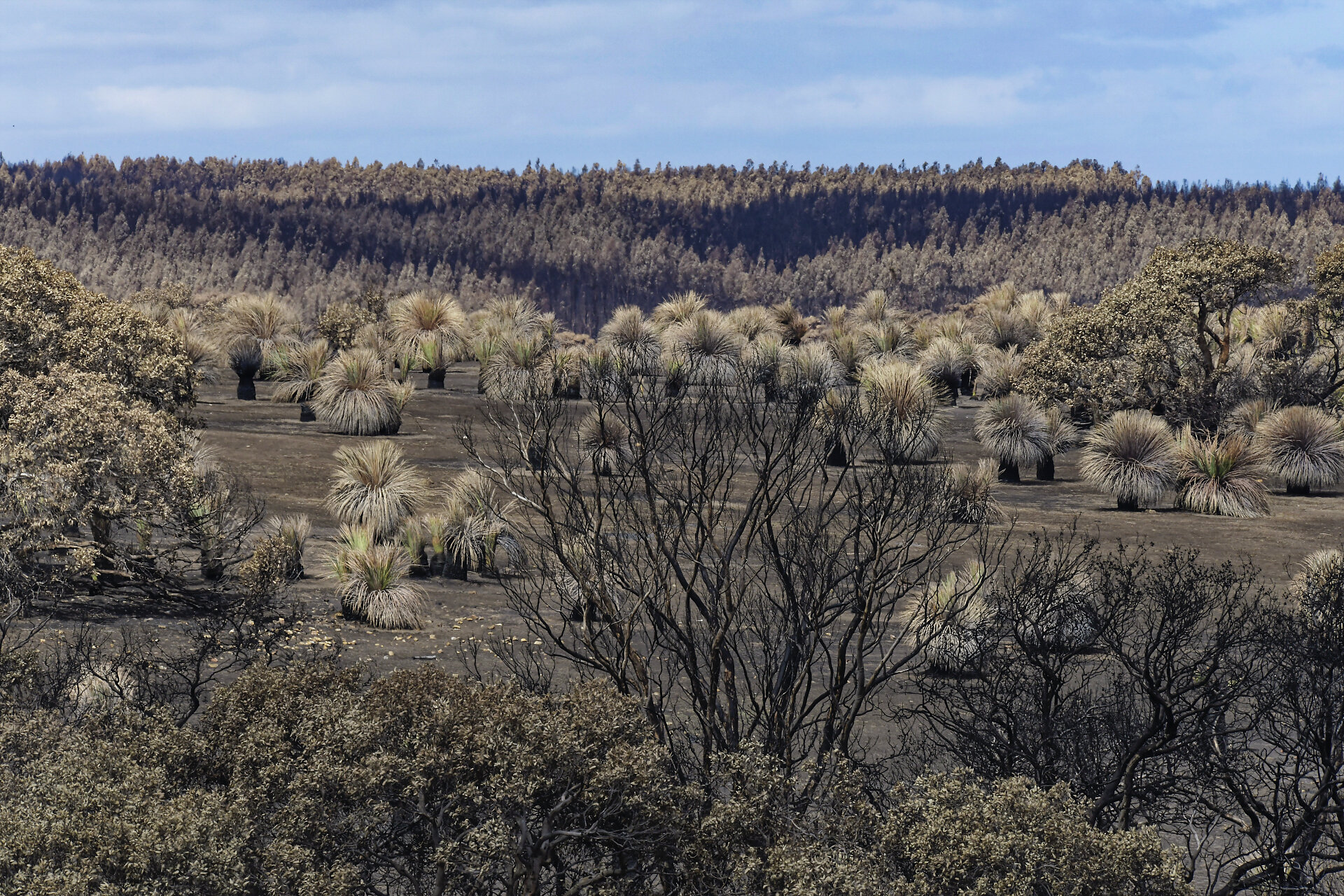Three Billion Animals
The recent catastrophic bushfire events were a watershed moment for Australia, and for the world. Suddenly the impacts of climate change became something visual and tangible on an unprecedented scale, and the apocalyptic outcomes of our planets inaction were evident.
This is a story of human intervention and its tragic consequences. Despite popular belief, Kangaroo Island is not a native koala habitat. Koalas were introduced to the island as a response to the near extinction of the species from the fur trade in the 1930s. Native forests were destroyed for cattle and later eucalyptus plantations, providing the ideal conditions for koalas to thrive in almost plaque levels and then suffer in staggering proportions during the bushfires.
Most wild koala populations now suffer from the bacterial disease chlamydia. Some wild populations have a 100% rate of infection, which usually leads to blindness and death. Many of the last viable forest habitats for koalas have now burned, decimating koala populations already suffering from disease, habitat loss and a shrinking gene pool.
Koalas are an indicator species and an endangered Australian icon. They are sensitive to changes in climate and are especially vulnerable to bushfires. They desperately need habitat, and yet Australia still continues to cut down its native forests at record levels to clear land for agriculture and livestock, devoted to the fantasy of perpetual economic growth.
Joining volunteers on black walks and photographing the devastation of the fires, I was assaulted with the stench of death and sight of thousands upon thousands of charred bodies. There were very few survivors, and those that were left were starving to death.
Twisted and contorted in grotesque poses, frozen in death like napalm casualties, they are the appalling reality that is the aftermath. Like a war zone, the scorched black earth is empty of food, water and sound. The smell of rotting flesh permeates the wind as it blows through dead forests that once flourished; unique species that evolved as Australia moved away from the supercontinent Gondwana, giving rise to life forms the earth had never before seen, east of the Wallace line.
There is also a profound human tragedy to this catastrophe, with firefighters receiving counseling for the trauma induced from witnessing so much death and destruction, the screams of the dying animals still haunting their lives.
The world looked upon Australia with horror during the summer fires of 2019/2020. It wasn’t just that a continent of extraordinary beauty and unique wildlife was on fire, but here was a democratic western government aggressively operating against the interests of its own people.Australia is the driest continent on earth but is selling its rivers and aquifers and continuing to promote and export coal at record levels. It is the land where birds evolved song and color, and where the ancestors to all birds thrived in ancient forests.
The latest estimates are that over a billion animals were killed by the fires, and the true loss is predicted to be much higher. Apart from the mass extinctions from asteroid impacts and volcanic eruptions, nothing has taken out so much life so quickly and so completely. Mammals, birds, reptiles, amphibians, marsupials, fish, bats and insects perished in unthinkable numbers. Most were killed directly by the instant blast of fires, while many succumbing later due to starvation, lack of shelter, and predation from introduced species like feral cats and foxes. The consequences of the bushfires is unwritten. In early 2020 a three year UN backed report by more than 500 scientists and experts from the Intergovernmental Science-Policy Platform on Biodiversity and Ecosystem Services (IPBES) was delivered to world leaders. It warns of grim implications for the future of the human enterprise. Nature is in free fall and unless urgent and effective action is taken, we face further widespread species extinction, biodiversity collapse, and mass human migration. Now as a global pandemic born out of wildlife wet markets also rips through every continent on earth, our very way of life is under serious threat.
Silent forests, devoid of life, are now all that is left of many of Australia’s last great wild places. Lacking any real meaningful government support, search and rescue teams picked up the few survivors but in many areas there remains none - the fires so complete in their incineration of every living thing except for the native plants that have evolved to withstand their natural fire cycles. But these fires were not normal, the scale and sheer number of species that have been lost is devastating and unprecedented, there was nothing normal about these fires, a consequence of human intervention and the broken system we cultivate.
These images are a reckoning illustration of how biodiversity loss on an unprecedented scale and time frame has played out in Australia with catastrophic implications. The inadequate human response to the events and the graphic awareness of how much is now gone is the awful truth of this story. Omnicide is a new word and idea that capitulates our unfolding reality, a term that invokes a crime never before seen or imagined. This is Australia’s new reality and a metaphor for the future we now face.





































